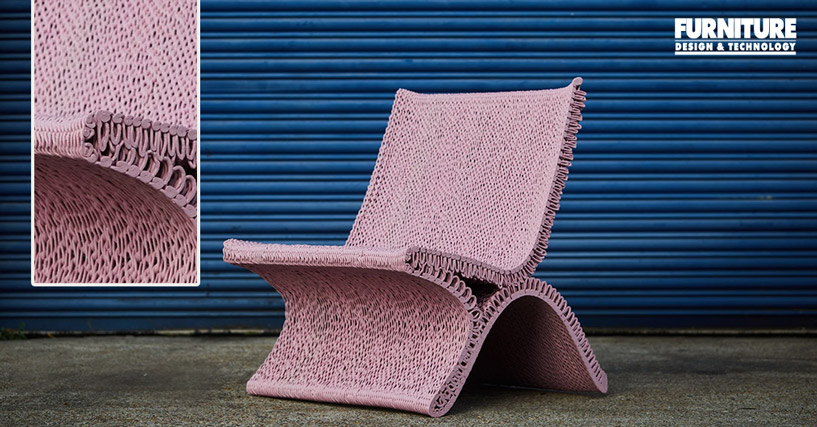
British designer Gareth Neal and the innovative Dutch studio The New Raw have embarked on a groundbreaking venture that pushes the boundaries of design and sustainability. Their collaborative project, known as the Digitally Woven series, delves into the realms of 3D printing by utilizing thrice-recycled plastic and an innovative printing methodology, which involves loops instead of conventional layers. Here is a detailed report on FURNITURE DESIGN AND TECHNOLOGY (FDT).

This innovative partnership has introduced a series of remarkable creations, including the eye-catching Loopy pink chair and three vessels that exhibit an aesthetic reminiscent of finely woven baskets. These remarkable works made their debut at the prestigious Material Matters fair, held during the illustrious London Design Festival. This collaboration was rooted in a mission to explore how time-honoured craft techniques, such as the art of willow work, knitting, crocheting and paper-cord weaving, could be seamlessly integrated into a novel form of 3D printing. The core objective was to develop a method that could gracefully embrace the imperfections in the final product, thus significantly reducing waste due to misprints, aligning with a sustainable design ethos.
Within the Digitally Woven project, Neal and The New Raw ingeniously employed interlocking loops as patterns to form the structural basis of their creations. This distinctive approach provided strength and resilience to the products while allowing them to work with a unique material—three-times recycled plastic, a material seldom utilized in traditional manufacturing. It’s important to recognize that working with recycled polypropylene plastic filament in 3D printing typically involves challenges linked to the mix of source materials in the waste stream and the number of times the plastic has been recycled. This complexity can lead to an inherently unstable printing process. However, Neal and The New Raw introduced a visibly different 3D printing technique, which deviates from the conventional method of layering filament to build an object.

In this groundbreaking approach, the 3D printing robot extrudes thicker cords of material, akin to the process of icing a cake from a piping bag, intricately layering it in a looped pattern within the 3D space. Notably, the lines and patterns in this process are manually drawn, creating a subtle and nuanced appearance inspired by natural movements and traditional crafting tools. This collaborative experimentation resulted in an impressive array of samples and textures that paved the way for a breakthrough. The introduction of open weave structures was a significant milestone in this creative journey. These structures hold a distinct place in the world of design as they offer robust, lightweight objects with the added benefit of using half the material compared to conventional manufacturing methods.
Image credit: James Champion
Furniture Design India and the magazine FURNITURE DESIGN & TECHNOLOGY (FDT magazine) are from the trusted 22-year-old media house of SURFACES REPORTER and PLY REPORTER.
FDT is a B2B monthly bilingual magazine from India that shares the pulse of the furniture business in India and connects the manufacturers, OEMS, product designers, architects, showrooms, designers and dealers.
Read More© 2025 Furniture Design and Technologies.. All Rights Reserved. Developed by eyeQ Advertising